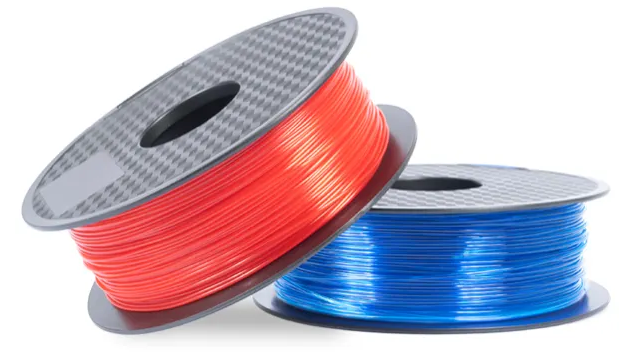Best PETG Filament
PETG is a frequently used 3D printing filament due to its incredible strength, relative flexibility, and temperature resistance compared to the ever-popular PLA.
It is assessed in many ways as ABS, but it is considerably easier to deal with and has the extra advantage of being food safe. As a result, it surpassed ABS as the market’s second most popular 3D printing filament. The characteristics of PETG provide its printing characteristics more in line with the well-known and straightforward PLA method while still maintaining the robustness of ABS parts. It’s ideal for printing that requires a little more flexibility than PLA can provide before breaking.
WHAT IS PETG
PET is converted into PETG, which stands for “polyethylene terephthalate-modified” because some of the ethylene glycols are substituted with CHDM (cyclohexanedimethanol), a substance you may be familiar with from plastic water bottles. The end product is a filament that is clearer, less fragile, and more extrudable than PET. The negative side effect is that it alters the recycling process. Even though PET is frequently recycled, PETG is not; the minute variations between these materials lead to problematic contamination in recycling plants.
Despite this, it’s an excellent filament option for printing objects that must be solid, smooth, and have minimal shrinking. Moreover, PETG is often used since it is considered food-safe, although you should still read the fine print on any spool you purchase.
Of course, there are some drawbacks: the best PETG filament has excellent layer adhesion but could be better at bridging because it is so sticky. Moreover, if left out, it has a higher hygroscopicity than PLA, making it more susceptible to heavy stringing and air-moisture absorption. Yet even so, regular PETG is a fantastic option if you require a high-strength material, and PLA or ABS won’t do.
When ought one to use PETG filament?
Given its flexibility, strength, temperature, and impact resistance, PETG is an excellent all-around material but stands apart from other filaments. This makes it perfect for mechanical parts, 3D printer parts, and protective components that may encounter sudden or persistent stress. Also, as the substance is thought to be food-safe, it may be an excellent choice for anything that will come into contact with food or beverages. Be sure to check your specific material first.
What are PETG print settings ideal?
Depending on the exact filament and manufacturer, there will be a difference in the best printer settings for PETG filament. Nonetheless, you may anticipate a particular set of characteristics from each spool of this thread. Manufacturers also advise a print bed temperature of 50 to 80 °C and the typical print temperature range of 220 to 250 °C. The material can often be printed at various temperatures and is highly forgiving.
Be aware that printing at the highest end of the above temperature range for an extended period will cause the PTFE liner in a hot end to deteriorate destructively. If you still need an all-metal hot end, consider getting one if you frequently print PETG.
How can you tell if your PETG filament is being printed with the best settings? There are a few strategies to make printing more successful and of more excellent quality. Examine the first layers thoroughly first. You should increase the temperature if the extruded material feels comfortable. Also, starting with a modest print speed of about 15 mm/s and gradually increasing it would be best. You can start increasing the speed after printing at this low pace to assist you in adjusting the temperature and other variables.
How Should PETG Filament Be Stored?
PETG absorbs moisture. It will take moisture from the air if left outside. Make sure to store PETG in a dry environment to avoid the myriad of issues that result from this, which almost always result in a disappointing failure print. Use a container, resealable bags, or silicate bags as alternatives.

